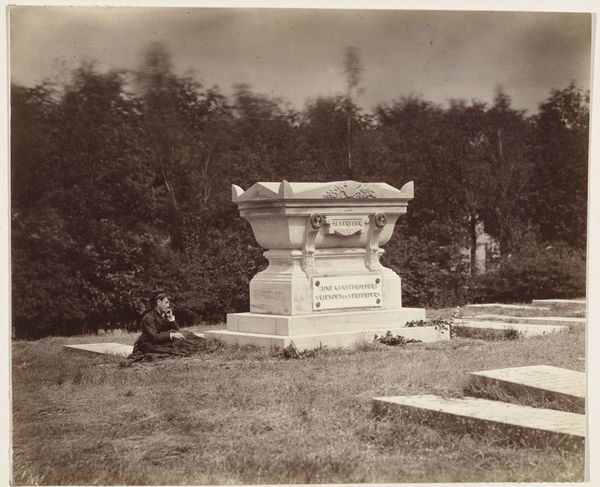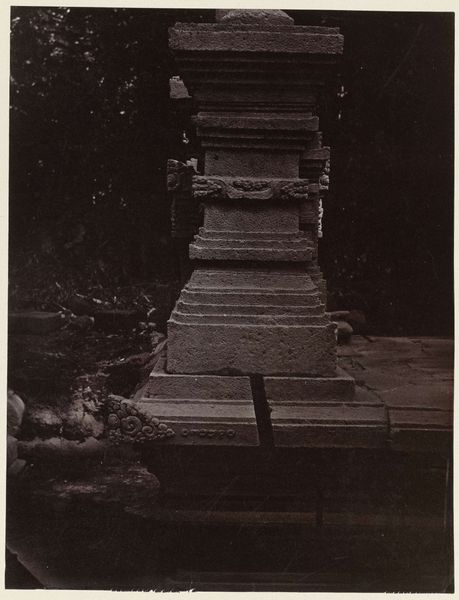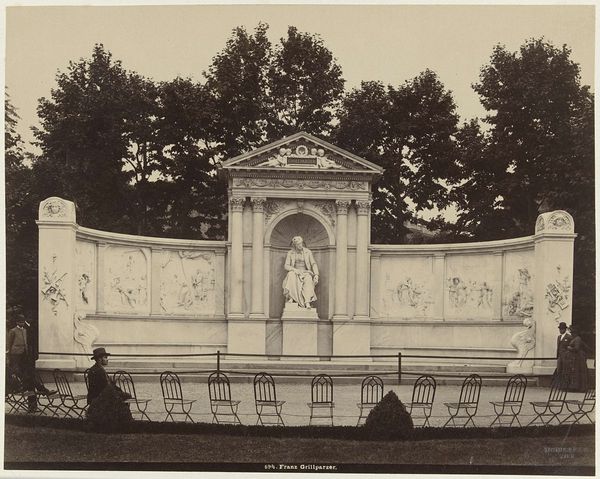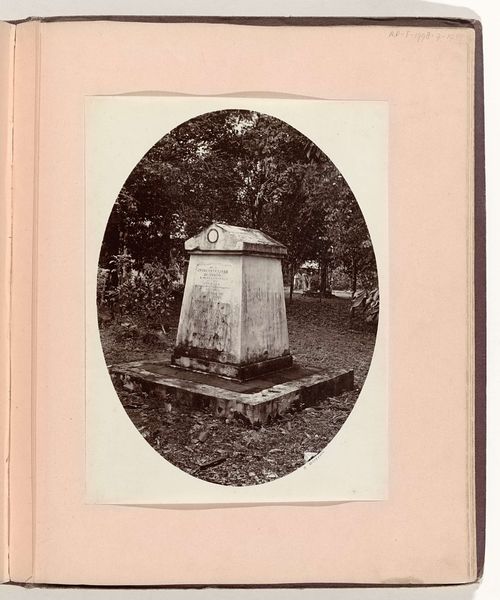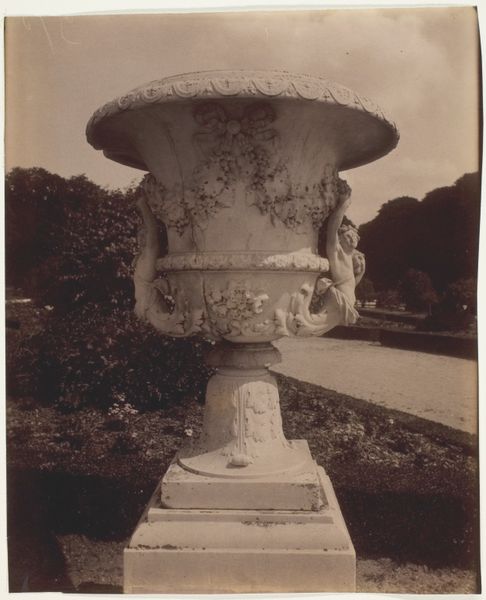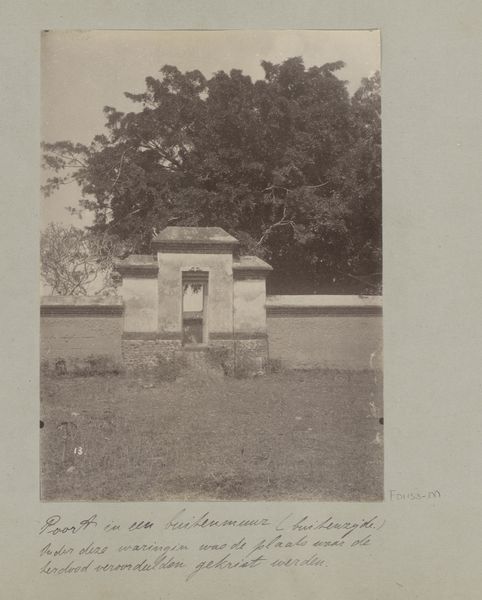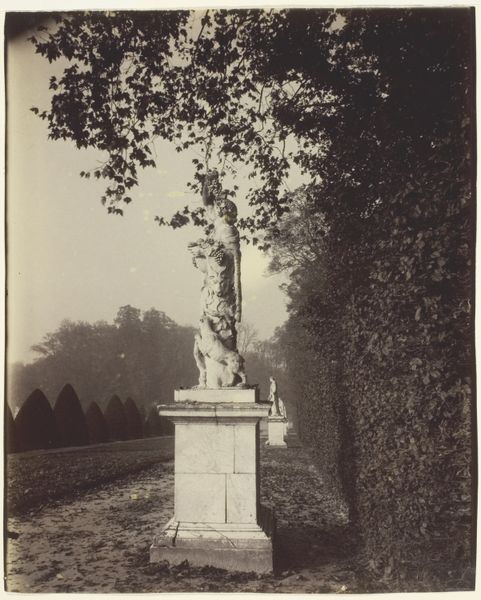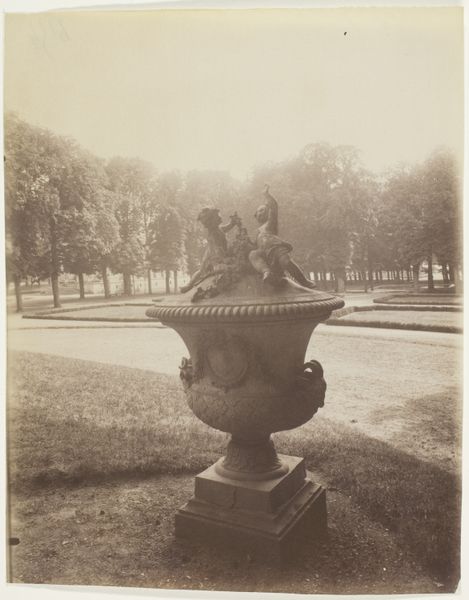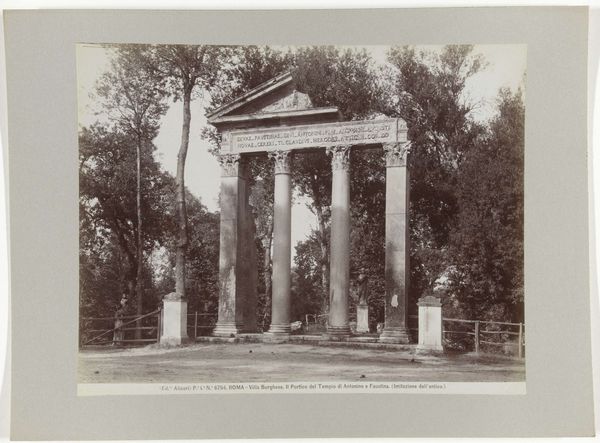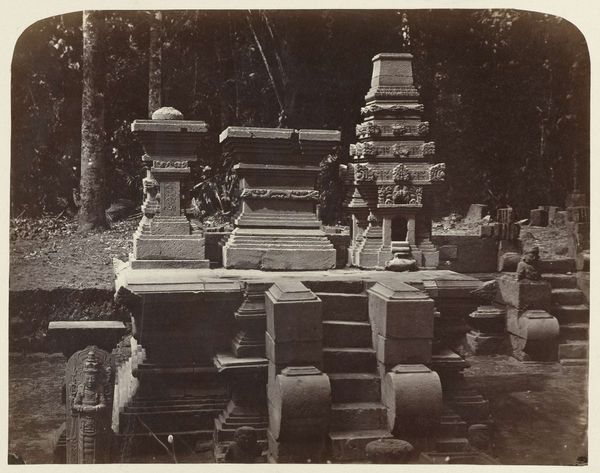
Grafmonument van Salomon Verveer op een Joodse begraafplaats 1876 - 1880
0:00
0:00
mauritsverveer
Rijksmuseum
print, photography, gelatin-silver-print
# print
#
landscape
#
photography
#
gelatin-silver-print
Dimensions: height 251 mm, width 189 mm, height 414 mm, width 293 mm
Copyright: Rijks Museum: Open Domain
Editor: This gelatin-silver print, taken sometime between 1876 and 1880, presents Salomon Verveer's grave monument within a Jewish cemetery. The photograph is held in the collection of the Rijksmuseum. Visually, what stands out to you? Curator: It evokes a serene, almost solemn atmosphere. The tonal range, those subtle gradations of light and shadow, lends a sense of timelessness. Notice the monument’s geometric structure contrasting with the organic backdrop of the foliage. Editor: Right, I find it quite moving how the hand of man is marked by that worked stone, contrasting so deliberately with the wild, overgrown, grassy plot that the structure is placed within. It seems a constant negotiation of nature versus industry. What do you notice about the material composition and construction of the grave itself? Curator: The monument itself presents as an almost neoclassical form. Observe how the sharp angles and tiered design offer a striking counterpoint to the more naturally formed trees and flora. This conscious construction offers an element of formal order amidst the chaotic aspects of nature's cycle. Editor: Exactly, and thinking of the cycle, I would wager it involved quarrying, transportation, carving – substantial labor and a degree of industrial processing even in the 1870s. And that choice of material – likely limestone or perhaps marble – signifies permanence but also cost, reflecting Verveer's status and the resources available to his family. Consider the environmental factors here also: its vulnerability to weather and eventual decay. It becomes subject to forces of entropy we have only minimal ability to influence. Curator: Intriguing thoughts. Perhaps those dual inscriptions, their geometric form standing apart from the main stone, are intended to provide symbolic layers to the memorial's intention. I'm moved by how they create a symbolic architecture. Editor: Yes, even this early experiment of photography feels timeless in its subject, which is interesting considering the technology was so innovative for its time. Curator: Agreed. It truly encourages introspection on representation, materiality, and remembrance itself. Editor: Definitely, a compelling confluence of social history and artistic execution.
Comments
No comments
Be the first to comment and join the conversation on the ultimate creative platform.
